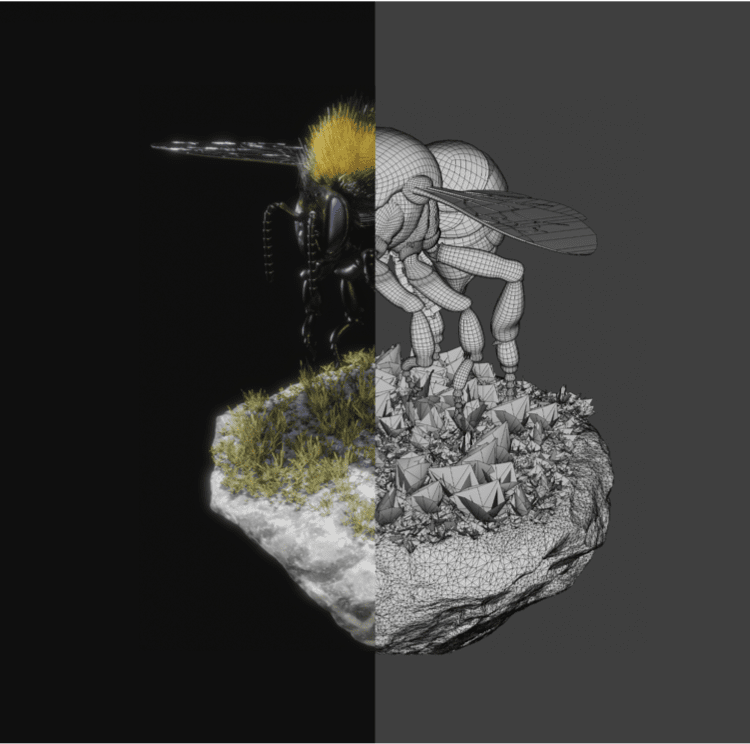Educational trip to the forest in virtual reality
Visually impressive work of 3D graphic designers and the effect of successful content optimization.

Forest Research Institute
The Forest Research Institute, celebrating its 90th anniversary at the time of the project implementation, deals with research and development works in the field of afforestation and restoration of forests, care, use, as well as ecology, nature protection, genetics, economics, and forest policy.
Challenge
Designing 5 detailed ecosystems in virtual reality.
- In the application we will visit Bory Tucholskie – pine forest, Dąbrowy Krotoszyńskie – oak forest, Białowieża Primeval Forest – broadleaved forest, Karkonosze – spruce forest, as well as the area “In the forest at home” – beech forest
- Appropriate ecosystems were to be built of characteristic, detailed mapped plants characteristic for each layer of the forest: undergrowth, undergrowth and layer of trees.

In total, the application contains:
9 species of mammals (17 models in total – male, female, young),
2 species of reptiles and amphibians,
3 species of birds (including the crane key model),
6 species of insects,
6 species of fungi, approx,
10 species of trees,
6 various shrubs and shrubs,
18 species of undergrowth plants, as well as cuttings, seeds, cones and traces and tracks of animals.
It was the presentation of biodiversity that was the key to creating the world of applications.

The player’s tasks dressed in the form of mini-games include: observing animals through binoculars, luring, photographing, and feeding selected species, as well as listening for their sounds. The project also assumed the possibility of impersonating creatures and viewing the world, e.g. through the eyes of insects (bumblebees) or from the position of the size of a given animal (e.g. an ant, bark beetle, stag beetle, shrew, frog).
The aim of the application is to familiarize young people with the world of nature through interesting and varied interactions performed while completing 30 virtual tasks.
An important part of the plan was also to create a coherent game concept – a story that could help young users to immerse themselves in the world of Polish nature with even greater curiosity.
Therefore, in reducing and transferring to the world of even the smallest inhabitants of the forest, the students were to be helped by drunk elixirs or the miraculous spores of mushrooms. The idea was to be able to take a close look at every part of the ecosystem during a virtual tour.

![]()
Solution
Smooth use and up to 120 realistic models
- Achieving high efficiency of the application while maintaining a detailed recreated environment
- A variety of animated models enlivening the space
- Various interactions and engaging activities for a wide group of users

When creating gaming systems, the primary challenge is always to reach a compromise between building a detailed environment and maintaining application performance.
Process

Gathering project assumptions

Defining user journey

Designing the gameplay

3D graphics creation
and programming

Adaptation to target devices
The simpler the models (solids) we create, with fewer intricate details and complex components, the better the simulator’s smoothness will be, resulting in a more seamless and immersive experience for users.


Technology



Effects
- Success # 1 | Visual wealth
The application was created for the Forest Research Institute to map existing ecosystems with accuracy to smaller insects or plants. In the context of designing VR experiences, it was a challenge that significantly developed the skills of the Giant Lazer development team, effectively enforcing the quality of gameplay elements based on the customer’s visual materials.
- Success # 2 | Educational mini-games
Thanks to the high optimization of the program, we were able to provide smooth gameplay for users who are focused on learning through play. By using the application, students and other visitors to the Institute have the opportunity to play the role of foresters and take on such time-limited challenges as hammering badges from the numerator to the forehead of pine trunks, picking berries, or careful segregation of garbage.
- Success # 3 | User-friendly application
The Forest Research Institute is planning to organize educational activities during which participants will be able to learn about fragments of rich, Polish nature. The participant using the prepared stand, and the participants watching his struggle on the wall screen, jointly develop ecological awareness. Everything under the supervision of an IBL educator who provides specialist knowledge and support.
